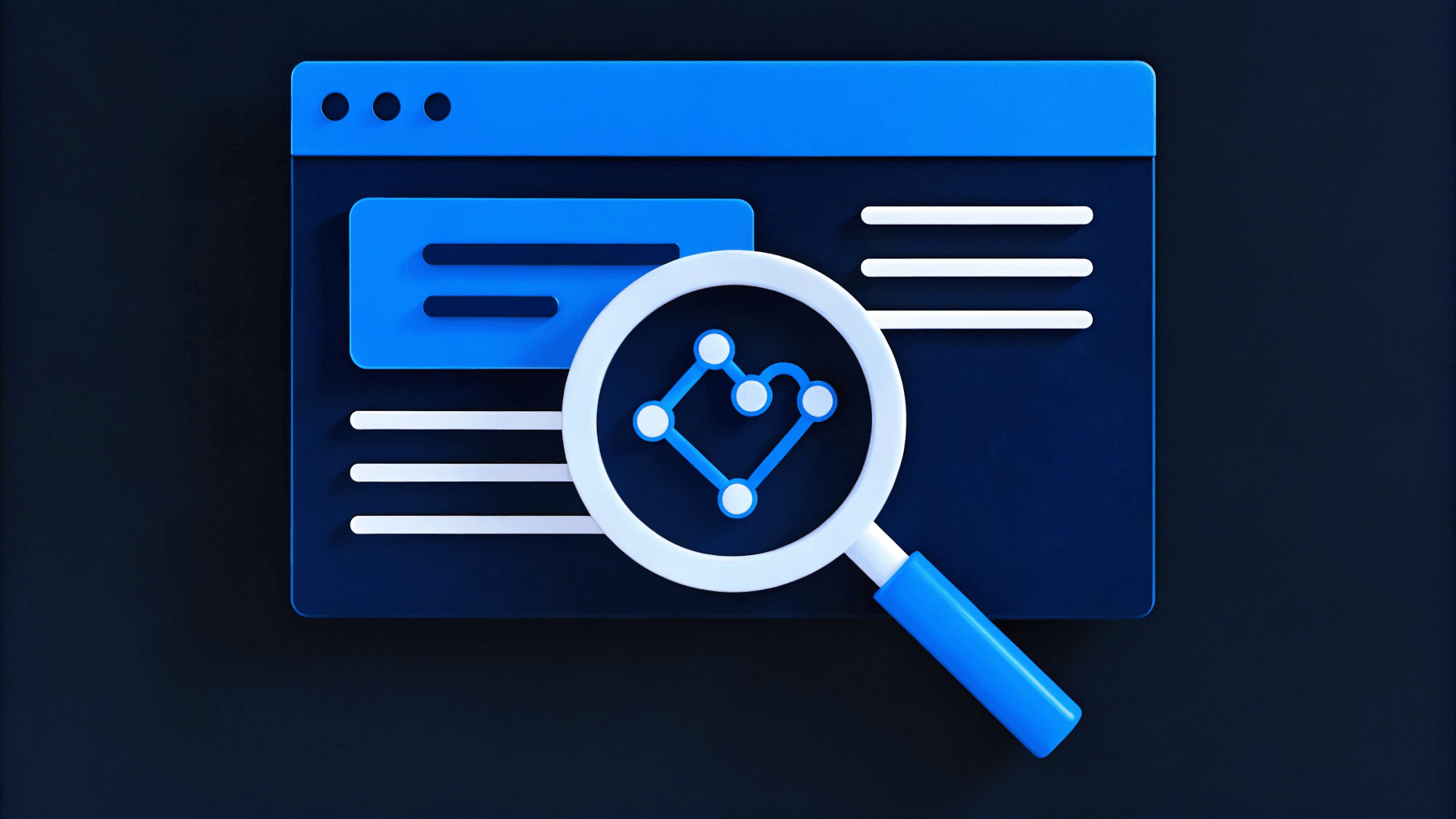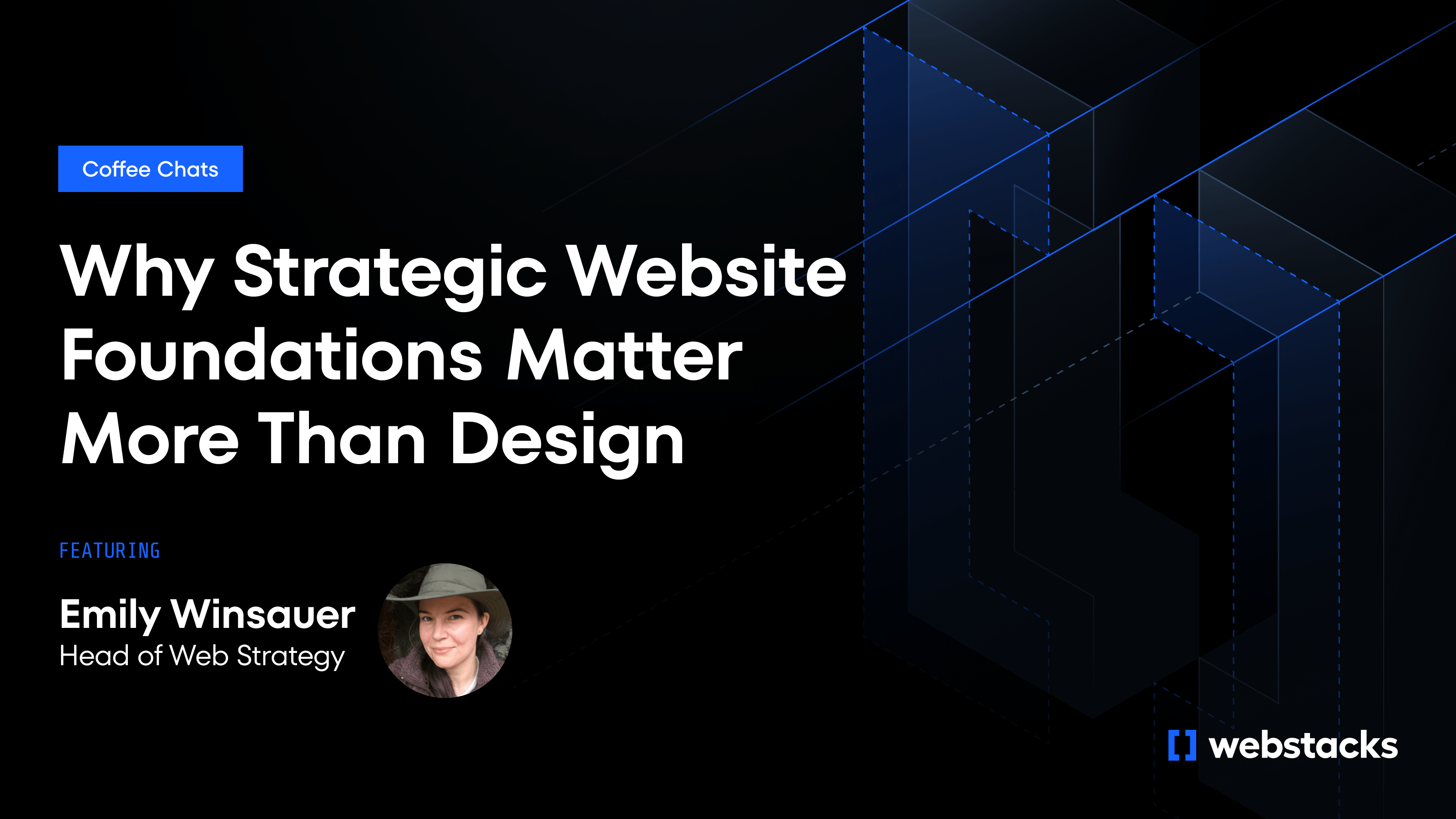Enterprise web leaders all have a horror story: a redesign that stretched on for months, burned through budget, and still missed revenue targets because stakeholders fought over priorities. Misalignment is the most frequent failure point in large projects, where marketing's conversion goals collide with IT's security checklists and legal's compliance demands.
For B2B SaaS companies, the stakes are higher—your site is the top-of-funnel engine that fuels demos, activation, and payback periods. If it stalls, growth stalls. The solution starts with treating your site as growth infrastructure, built through a methodology that transforms competing stakeholder priorities into aligned execution.

1. Set Your Strategic Foundation
Success begins with establishing unshakeable alignment on business objectives and clear leadership accountability. Without this foundation, even the best tactical execution will collapse under competing priorities.
Clarify Business Objectives and Success Metrics
Start with the most basic question: "What are our business objectives for this redesign?" Capture every stakeholder's answer verbatim in a shared document. You'll know you've succeeded when every team member can repeat the same goals back to you in plain language.
Next, translate those aspirations into two or three razor-sharp OKRs (Objectives and Key Results):
- "Increase demo-request rate 20%"
- "Shave CAC payback from 14 to 10 months"
- "Lift product activation to 35%"
These metrics give everyone concrete targets to work toward and enable data-driven prioritization when trade-offs arise. Secure written sign-off before design starts—without it, competing priorities will rapidly derail progress.
Secure Executive Sponsorship and Project Leadership
Large-scale redesigns grind to a halt when no one holds the wheel. This leadership vacuum stands as the top reason enterprise projects miss targets. You need two clearly defined roles from day one:
- Executive Sponsor (often the CMO) who unlocks budget, makes the redesign a business priority, and resolves escalated conflicts. This person focuses on organizational alignment and resource allocation.
- Project Lead (typically a web product manager) who runs daily execution, approves trade-offs, and protects against scope creep. This person manages tactical decisions and keeps momentum moving forward.
The key is ensuring these roles complement rather than compete. When both are clearly defined and respected, teams can navigate complex enterprise politics without losing momentum on critical deliverables.
2. Build Stakeholder Alignment Systems
With strategy and leadership established, you need structured frameworks that prevent the communication gaps and role confusion that consistently derail enterprise redesigns. This systematic approach transforms chaotic stakeholder management into predictable collaboration.
Create Accountability with RACI + RAID
Clear accountability prevents the overlapping responsibilities and duplicated efforts that create bottlenecks. Start by creating a RACI matrix that assigns every task:
- Responsible: A Single person who does the work
- Accountable: A Single person who makes the decision
- Consulted: People who provide input
- Informed: People who need updates
Pair this with a RAID log to track:
- Risks that could derail the project
- Assumptions you're making
- Issues currently blocking progress
- Dependencies on other teams or systems
For SaaS teams managing large editorial teams, this framework transforms CMS access from chaos to control. Instead of blanket editing permissions, you create tiered access based on responsibilities: content creators draft, reviewers approve, and publishers go live.
Run Structured Requirement-Gathering Workshops
Getting all departments aligned requires structured collaboration that moves beyond endless email threads and siloed planning. Use this focused 45-minute workshop agenda:
- 5-minute pain-storm per team: Each department captures every gripe on sticky notes
- Affinity-map the themes: Work together to identify common issues across departments
- Solution sketches: Break into trios for rapid ideation that turns complaints into actionable concepts
- Rotate facilitators: Keep a neutral facilitator so no department dominates
Take a picture or screenshot of every board before moving on, then schedule one-on-one stakeholder interviews within 48 hours. These private conversations reveal budget constraints, interdepartmental tensions, and unofficial decision-makers who weren't in the room but hold veto power.
This systematic approach ensures you capture both explicit requirements and the hidden political dynamics that can derail implementation.

3. Execute with Modular MVP Approach
With aligned stakeholders and clear requirements, execution becomes about managing scope and building for sustainable growth. The key is launching incrementally while designing for long-term scalability, avoiding both the "rebuild everything" trap and the technical debt that accumulates from rushed solutions.
Prioritize Through Phased Launch Strategy
The temptation in enterprise redesigns is to rebuild everything at once, but this consistently leads to delays and budget overruns. Smart teams recognize that launching incrementally creates faster time-to-value while reducing risk.
Start by asking: "What's our MVP and how do we sequence for maximum impact?" Focus on a minimum viable site that delivers immediate business value while building toward your documented OKRs:
- Phase 1: Core conversion pages—Home, Pricing, Demo (directly impacts demo requests)
- Phase 2: Resource hub and blog migration (supports nurture and SEO)
- Phase 3: Partner portal and integrations marketplace (enables ecosystem growth)
This approach prevents feature bloat while allowing you to incorporate user feedback and market changes between releases. Each phase validates assumptions before committing to larger changes.
Case Study: Calendly's strategic redesign illustrates this methodology perfectly. When pivoting from pure product-led growth to capturing enterprise customers, they phased their transformation: Solutions pages organized by Role, Industry, and Company Size; an overhauled Enterprise page moved to primary navigation; and a comprehensive Resource Center. Each phase supported their evolving sales motion while maintaining site performance.
Design for Modular Governance
Enterprise websites face constant pressure for updates and campaign launches that can quickly create technical debt. Traditional monolithic architectures force teams to choose between speed and stability. Modular design eliminates this trade-off by creating reusable components that maintain consistency while enabling rapid iteration.
Build your foundation with a shared component library paired with a headless CMS architecture. For example, Contentful connected to Next.js lets marketing teams assemble pages from pre-built components, speeding campaign launches while maintaining performance standards. When you update one module, changes propagate across the entire site.
Like Calendly's transformation from a rigid Contentful environment to a modular architecture, this approach enables quick integration of essential tools—FullStory for session replay, Optimizely for A/B testing, Clearbit for lead scoring—without compromising site stability.
The result: Governance creates freedom rather than restrictions. Instead of costly redesign cycles every few years, you evolve incrementally. Your CMS becomes growth infrastructure rather than a liability, giving stakeholders control over their content while maintaining brand consistency and site performance.
4. Validate and Iterate
Internal stakeholder debates can consume weeks without resolution, often resulting in design-by-committee, where personal preferences override user needs. Testing breaks these deadlocks by introducing objective evidence that transforms opinions into actionable insights.
Stress-Test with User Feedback Loops
When stakeholder debates about hero copy or navigation labels drag on endlessly, break the stalemate with rapid validation methods. Here's how to run each test with specific tools and timelines:
Tree-Testing Your Navigation Structure
Use Optimal Workshop's Treejack or Maze to test findability before visual design begins. Create tasks like "Where would you go to request a demo?" or "Find pricing for teams of 50+ people." Run with 15-20 target prospects over 2-3 days.
Five-Second Impression Testing
Upload homepage mockups to UsabilityHub or create quick Loom recordings showing the page for exactly 5 seconds. Ask: "What does this company do?" and "Who is this for?" Test 3-4 hero variations with 10 responses each. Clear winners emerge immediately.
Task-Based Usability Testing
Set up conversion path tests using UserTesting.com for moderated sessions or Hotjar's user recordings for unmoderated insight. Create realistic scenarios: "You're evaluating scheduling tools for your sales team. Start from the homepage and sign up for a trial." Test key paths with 5-8 users per critical flow.
This systematic testing approach transforms subjective stakeholder opinions into user-centered decisions while building confidence in the final product through real prospect validation.
Transform Your Redesign Into Growth Infrastructure
When redesigns stall, misaligned priorities, fading buy-in, and scope creep are usually to blame. The methodology outlined here—strategic foundation, aligned systems, modular execution, and continuous validation—transforms these common failure points into competitive advantages.
Your website becomes a growth infrastructure that evolves with your business rather than a static asset that requires complete rebuilds every few years. Most importantly, stakeholders shift from obstacles to advocates when they understand their role in a proven system.
Ready to eliminate the political friction that derails most redesigns? Talk with our experts to discuss how we can help you navigate your redesign with clear processes and proven frameworks.




